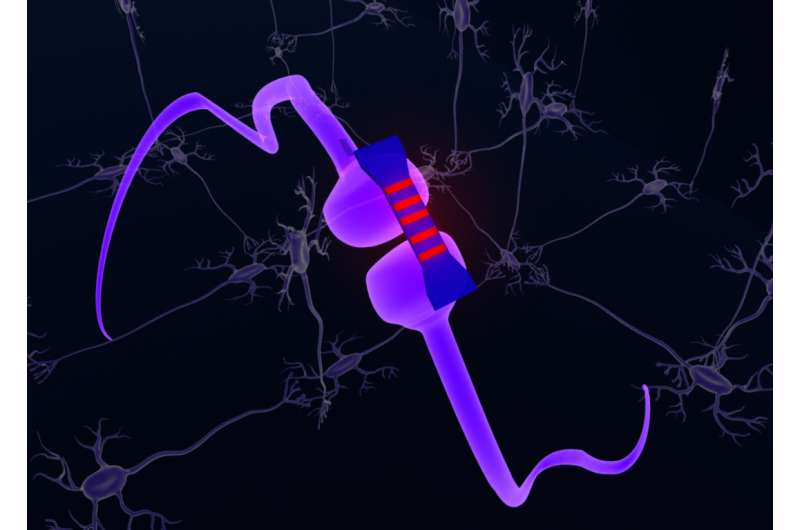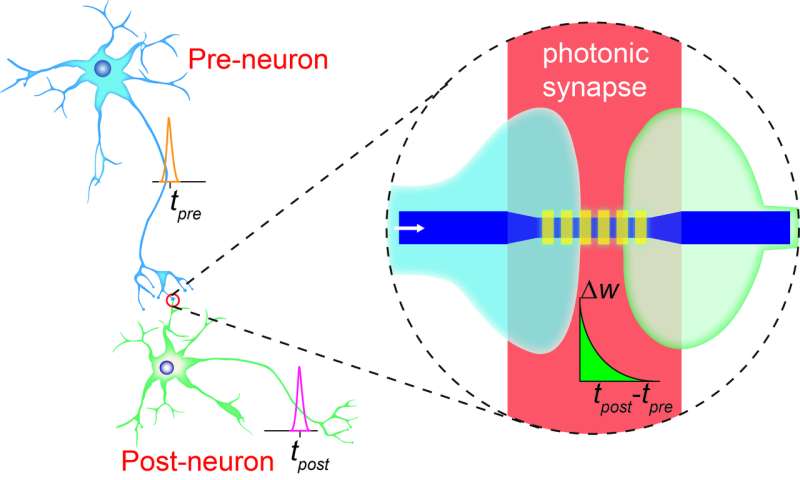Move towards 'holy grail' of computing by creation of brain-like photonic microchips

Scientists have made a crucial step towards unlocking the "holy grail" of computing - microchips that mimic the way the human brain works to store and process information.
A research team, including Professor C. David Wright from the University of Exeter, have made a pioneering breakthrough by developing photonic computer chips - that use light rather than electricity - that imitate the way the brain's synapses operate.
The work, conducted by researchers from Oxford, Münster and Exeter Universities, combined phase-change materials - commonly found in household items such as re-writable optical discs - with specially designed integrated photonic circuits to deliver a biological-like synaptic response.
Crucially, their photonic synapses can operate at speeds a thousand times faster than those of the human brain. The team believe that the research could pave the way for a new age of computing, where machines work and think in a similar way to the human brain, while at the same time exploiting the speed and power efficiency of photonic systems.
The research is published in Science Advances on Wednesday, September 27 2017.
Professor Harish Bhaskaran from Oxford University and who led the team said "The development of computers that work more like the human brain has been a holy grail of scientists for decades. Via a network of neurons and synapses the brain can process and store vast amounts of information simultaneously, using only a few tens of Watts of power. Conventional computers can't come close to this sort of performance."

Professor C David Wright, co-author from the University of Exeter, also explained: "Electronic computers are relatively slow, and the faster we make them the more power they consume. Conventional computers are also pretty 'dumb', with none of the in-built learning and parallel processing capabilities of the human brain. We tackle both of these issues here - not only by developing not only new brain-like computer architectures, but also by working in the optical domain to leverage the huge speed and power advantages of the upcoming silicon photonics revolution."
Professor Wolfram Pernice, a co-author of the paper from the University of Münster added: "Since synapses outnumber neurons in the brain by around 10,000 to 1, any brain-like computer needs to be able to replicate some form of synaptic mimic. That is what we have done here."
'On-chip photonic synapse' by Zengguang Cheng, Carlos Rios, Wolfram Pernice, C David Wright and Harish Bhaskaran is published in Science Advances.
More information: "On-chip photonic synapse" Science Advances (2017). advances.sciencemag.org/content/3/9/e1700160
Journal information: Science Advances
Provided by University of Exeter












.jpg)




